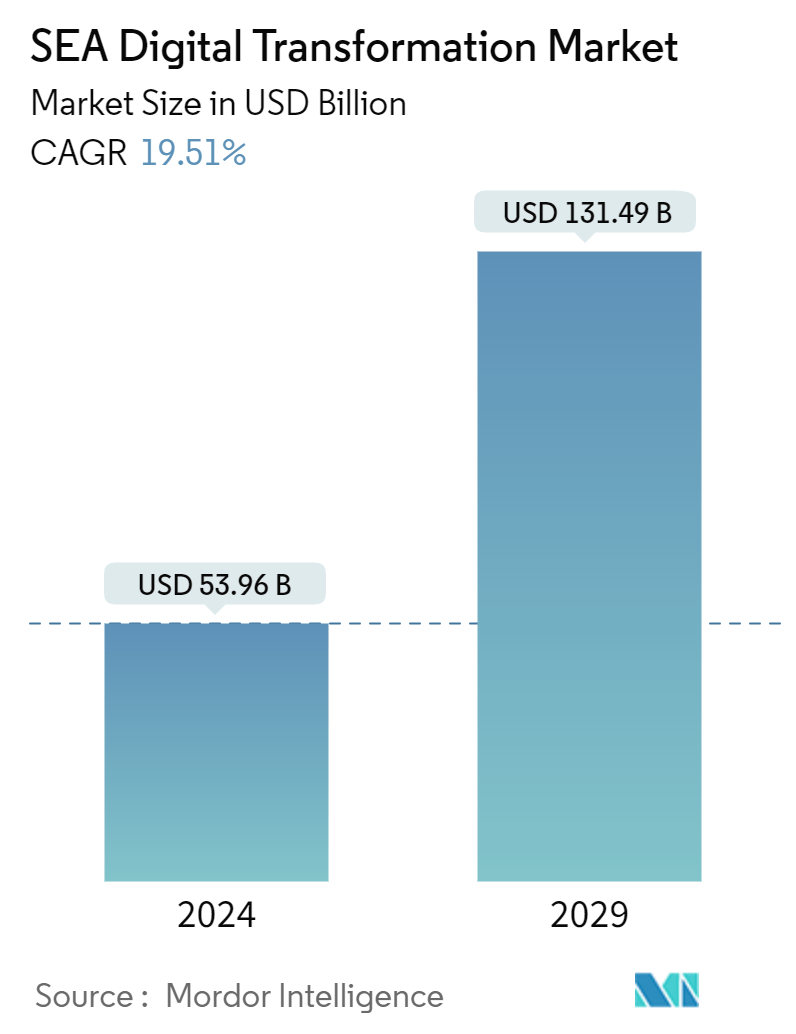Market Size of SEA Digital Transformation Industry

| Study Period | 2019 - 2029 |
| Base Year For Estimation | 2023 |
| Market Size (2024) | USD 53.96 Billion |
| Market Size (2029) | USD 131.49 Billion |
| CAGR (2024 - 2029) | 19.51 % |
| Market Concentration | Medium |
Major Players
*Disclaimer: Major Players sorted in no particular order |
SEA Digital Transformation Market Analysis
The SEA Digital Transformation Market size is estimated at USD 53.96 billion in 2024, and is expected to reach USD 131.49 billion by 2029, growing at a CAGR of 19.51% during the forecast period (2024-2029).
The Southeast Asia (SEA) digital transformation market is experiencing robust growth driven by rapid technological adoption, increasing internet penetration, and supportive government policies.
- Technological advancements, notably in AI, ML, IoT, and cloud computing, are driving digital transformations across diverse sectors. These innovations empower businesses to streamline operations, elevate customer interactions, and innovate business models.
- In Southeast Asia (SEA), robust internet and mobile penetration rates are catalyzing digital engagement and the uptake of digital services. This heightened connectivity is fueling the growth of e-commerce, digital payments, and online services, thereby expediting the region's digital evolution.
- SEA governments are rolling out policies and initiatives to champion digitalization and foster smart cities. Notable programs like Thailand 4.0, Malaysia’s Digital Economy Blueprint, and Singapore’s Smart Nation initiative are instrumental in cultivating a digital-friendly landscape.
- The banking and financial services realm is harnessing digital tools to revamp customer experiences through digital banking, fintech solutions, or blockchain. This digital pivot is streamlining operations, enhancing customer service, and introducing novel financial offerings.
- However, as digitalization intensifies, the specter of cybersecurity threats and data breaches looms larger. These risks not only jeopardize trust in digital services but also pose a hindrance to businesses fully embracing the digital shift.

